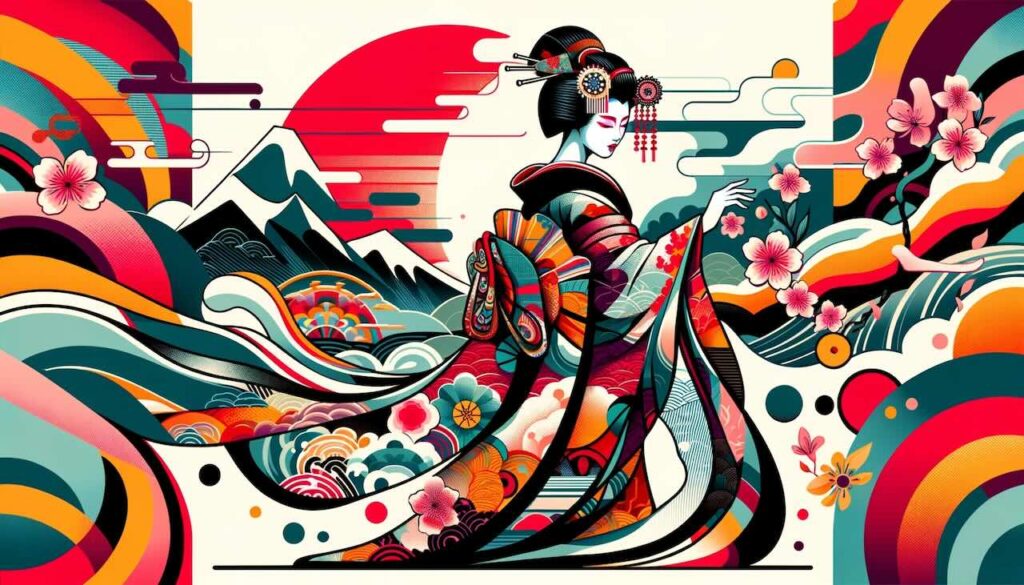Sumo is far more than a sport — it’s a living reflection of Japan’s mythology, spirituality, and centuries-old traditions. From divine legends to grand tournaments, sumo’s journey mirrors the cultural heartbeat of Japan itself. Let’s trace how this sacred practice evolved into a global icon while preserving its rich spiritual roots.
- Sumo’s Divine Beginnings in Japanese Mythology
- From Imperial Courts to Noble Pastimes
- The Samurai Era: Sumo as Warrior Training
- The Edo Period: Birth of Professional Sumo
- Modernization During the Meiji Era
- Postwar Revival and Globalization
- Sumo Today: Global Popularity, Ancient Heart
- Conclusion: An Unbroken Line of Spirit and Strength
Sumo’s Divine Beginnings in Japanese Mythology
Sumo’s origins are deeply rooted in Shinto mythology. Ancient chronicles such as the Nihon Shoki describe how gods wrestled to determine the fate of the land. In one legendary bout, Takemikazuchi, the god of thunder, defeated Takeminakata, symbolizing divine authority over Japan’s sacred territory.
Similarly, the Kojiki recounts a legendary contest between Nomi-no-Sukune and Taima-no-Kehaya, often cited as the birth of sumo as a physical contest. These mythical stories highlight sumo’s profound connection to Shinto beliefs — a connection still evident in its modern-day rituals.
For a complete overview of sumo’s rituals and spiritual symbolism, visit:
👉 Why Sumo Wrestlers Throw Salt: The Sacred Meaning Behind the Ritual
From Imperial Courts to Noble Pastimes
Historical records suggest that sumo was performed before the imperial court as early as 642 AD. By the Nara period (710–784), it became a formal court ceremony known as Sumai no Goran, where bouts were staged to entertain the emperor.
During the Heian period (794–1185), sumo flourished among Japan’s aristocracy. Literary works such as The Tale of Genji and The Pillow Book reference sumo as both entertainment and a cultural spectacle, emphasizing its rising social importance.
The Samurai Era: Sumo as Warrior Training
In the Kamakura period (1185–1333), sumo found new patrons in the samurai class. Feudal lords like Minamoto no Yoritomo and Hōjō Tokimune encouraged sumo as martial training for their warriors.
The Muromachi period (1336–1573) saw the rise of kusa-zumo (field sumo), where matches were held on shrine and temple grounds as religious offerings. These sacred roots continue today through purification ceremonies like dohyō matsuri and ritual shiko (leg stomps) to drive away evil spirits.
For a full guide to sumo’s spiritual, ceremonial, and ranking structure, explore:
👉 The Complete Guide to Sumo: Japan’s Sacred National Sport Explained
The Edo Period: Birth of Professional Sumo
Sumo truly blossomed during the Edo period (1603–1868), becoming a public spectacle and mass entertainment:
- In 1684, the first official rankings (banzuke) were published — a system still governing sumo today.
- In 1756, Tanikaze Kajinosuke became the first officially recognized yokozuna, performing the grand ring-entering ceremony (dohyō-iri) that remains iconic.
Rival stables, known as ichimon, competed fiercely, drawing large crowds and elevating star wrestlers to early celebrity status.
To better understand how sumo’s ranking system operates today, see:
👉 Inside the Sacred World of Sumo: Understanding the Hierarchy of Japan’s National Sport
Modernization During the Meiji Era
As Japan modernized rapidly during the Meiji period (1868–1912), sumo adapted while preserving its traditions:
- The term ōzumō (“grand sumo”) emerged in 1884.
- The Japan Sumo Association was established in 1909, standardizing tournaments and rules nationwide.
- Foreign spectators gradually developed interest, laying the foundation for sumo’s global audience.
Postwar Revival and Globalization
Following World War II, sumo regained its status as a cultural symbol:
- Yoshibayama became the first postwar yokozuna in 1953.
- Taihō Kōki dominated the 1960s with unprecedented success.
- Takamiyama (Jesse Kuhaulua) from Hawaii broke barriers as the first foreign-born wrestler to reach the top division, paving the way for Konishiki, Akebono, and other international stars.
Sumo Today: Global Popularity, Ancient Heart
Today, sumo thrives as both a national institution and a global attraction:
- Six major tournaments are held annually in Tokyo, Osaka, Nagoya, and Fukuoka.
- International fans from around the world attend or follow tournaments online.
- Foreign-born wrestlers, particularly from Mongolia, have excelled — with Hakuhō breaking numerous records.
Despite internationalization, sumo remains firmly grounded in its spiritual and cultural foundations, balancing tradition with global appeal.
Conclusion: An Unbroken Line of Spirit and Strength
From mythical gods to modern arenas, sumo’s journey reflects Japan’s enduring respect for balance, discipline, and ritual. Each foot stomp, salt toss, and match embodies not just physical competition but a profound cultural legacy.
Sumo continues to captivate the world by remaining true to its origins — a sport where sacred ritual and athletic mastery collide in perfect harmony.


